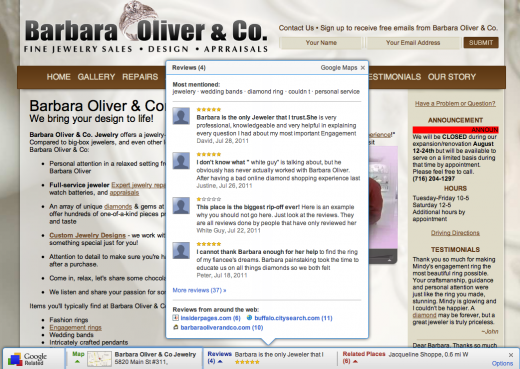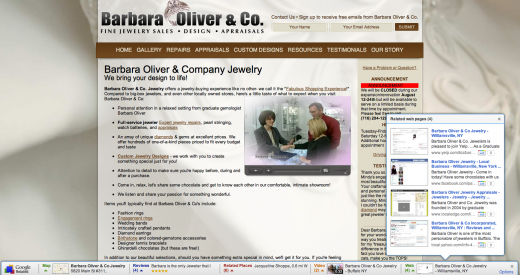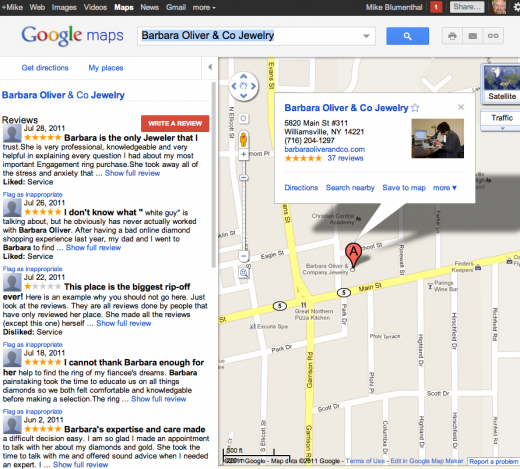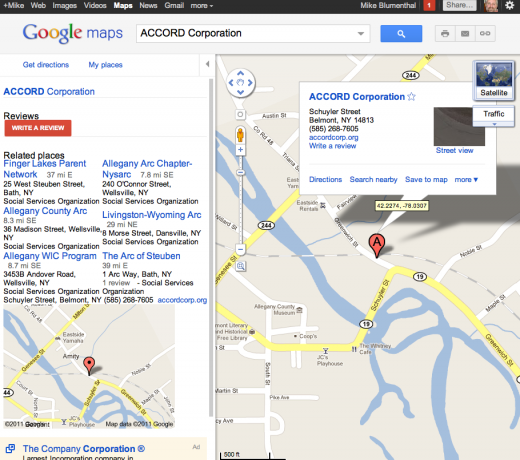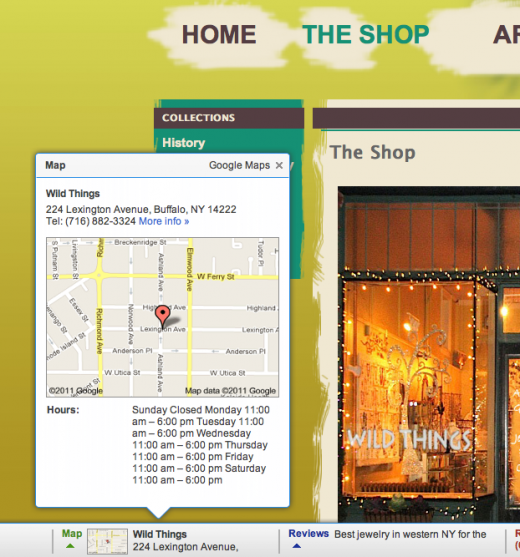Opening a new business is an exciting proposition. But as you are laying the foundation for all of your future web equity it is important to not put the cart before the horse. This poster in the forums was, like any self aware business person these days, wanting to get his soon to open business showing in Google Places before it opened to help generate buzz. Not a good idea.
Listing a new business with Google has its own quirks that need to be considered so I am highlighting my response here and following that up with a sample timeline for the complete process.
The Forum Question
VERIFICATION ISSUES FOR The Boilerhouse Restaurant on University of Western Sydney Campus
Hi I have no problems with executing my verification via mail however as you can imagine being on a large university campus (and my restaurant is still under construction therefore doesnt exactly exist yet so no mail can get to it) the mail is getting lost.
I need to be able to verify via phone or email. our website is boilerhouse.com.au however is under construction and hasnt gone live yet as our restaurant is not open yet.
Could someone please let me know how I can VERIFY as I wont receive the mail on the campus and haven’t even though I have had it sent twice as I want my google places live for opening in August.
If anyone knows a way to help me. please let me know. my situation is unique being located on a Campus.
My Answer:
I understand your desire to have your Google listing live before August. However I would strongly caution you against doing so.
There are several reasons but verifying BEFORE you are open will actually result in more delays in the actual showing of your record on Google and could lead to a suspension from Google.
Businesses that are under construction or that have not yet opened to the public are not eligible for a listing on Google Places.
What we have seen is that businesses that attempt to verify prior to opening end up in an infinite state of Pending, never going live. How does Google know? We are not exactly sure but it is important that the signals that we know they use are ALL active and in their system BEFORE you attempt to verify.
They create what is known as a cluster around every unique business/phone combo that they find. In that cluster is all the evidence about not just the existence but the popularity of your business. They get this data from lists that they buy in each country, from trusted information web sites (like Hotfrog) that they scrape, from your website and from around the web. They know when things were initiated like phone numbers, when domains were pruchased and when websites have gone live… they add all of this information up in their cauldron like cluster and make a determination that you must not be open yet as no one else in the universe seems to have heard of you… once that happens you could wait till Kingdom comes for a resolution.
As to getting the PIN, Google uses their trust assessment (see above) to decide which verification method to offer up. If they find little to go on, they (ie their algo) only offer the post card. So you have little choice but to go down to the campus mail room, bribe the clerks to be on the look out for your card and be sure that it makes its way to you.
Before doing so though I would suggest that 1)your finish your website 2)you get listed in all the major directories in AU 3) you be sure that you are listed properly with the legal authorities and utility companies. You should do all of that 8 WEEKS or more before claiming your record at Google, When you finally do get that PIN, as aggravating as it was, your record will likely go live within 24 hours and you WON’T end up in a Google purgatory.
Each starting business is different and establishing an absolute set of steps is nearly impossible. But here is timeline that you can reference to establish your own internet marketing baseline for local:
6 Months Out – Start the legal paperwork to get your business established. These county and state documents find their way into Google via Axciom. It isn’t known how long it takes for this data to finally wind its way through the system and 6 months might not be enough.
5 Months Out – Depending on timing, you might want to think about taking out a Yellow Page print ad. As you know I am not a big fan of taking out these ads BUT if your business is opening in the first quarter of the year, it is one authority source that is used by Google’s most trusted list source, InfoUSA and could help.
4 Months Out – Buy a domain name and get a telephone number and list them in the business name and at the future address of the business. Google is a registrar and sees the domain and its age is likely a factor in trust. Localeze, one of the primary list suppliers in the US, tracks new phone number creations and uses it as a trust source. Their data, used directly by Facebook, Bing, Yahoo and others, probably makes its way to Google indirectly but makes it there none the less.
3 Months Out – Start filing your business listing with the primary data suppliers. It takes between 8 and 12 weeks for the data to move from primary list supplier to Google so it needs 3 months. For your first year be sure to list with both UBL.org AND Localeze to maximize your presence in the critical upstream data sources. (I am checking with Localeze and InfoUSA to see if they have a specific policy in this regard). You might also want to consider joining the BBB. Again I am not usually a fan of these folks but establishing your virtual presence requires leveraging as many trusted off line and online sources as you can afford.
2 Months Out – try to get your website finished up and live. Be sure that the site follows best local practices for site building and includes the NAP (Name, Address & Phone) on every page, has a detailed Contact Us page and has a KML sitemap. Pimp the site on Twitter and Facebook, list it in Webmaster tools and get a few inbound links so that Google and the other search engines promptly index it. It takes Google from 6-8 weeks to get data from your website into their main index and then into the Maps index. Sloooow.. why no one knows except Google but it is one of the major bottlenecks in the system.
6 weeks out – Start claiming your listing at the prominent local directories and information sites like the Yahoo, Bing, Superpages, Citygrid etc
2 weeks out – Familiarize yourself with the Google Places Dashboard, read their quality guidelines, pick appropriate Google Places categories and write a great 200 character description of your business. But DON’T VERIFY your listing just yet.
Opening Day – celebrate, get some great press and bask in your new found freedom before the reality of your serfdom becomes obvious.
Opening Day Plus One Day – CLAIM Your Listing in Google Places. If all is in Place your listing should go live in 48-72 hours.
Pray that their system has adequate knowledge about your business that you don’t hit Pending. Although if you do, be patient. Pending means that a human review is taking place. Don’t freak out, don’t change your Places listing. Remember that while you and your business are the most important thing in the world to you, to Google you are just a virtual blip on their statistical radar. It isn’t personal. Wait the 3-4 weeks for them to see that you are real and take the time start planning the next step.
